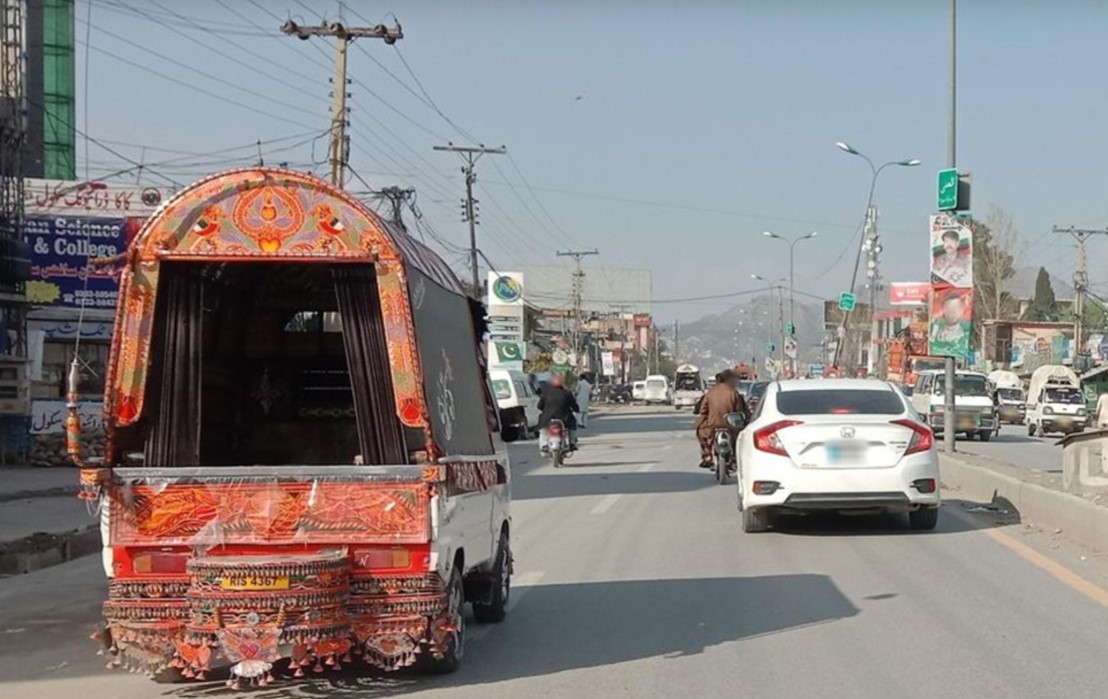Making Abbottabad an integrated city focused on sustainable mobility development

Abbottabad is the principal city in the Hazara district of the Khyber Pakhtunkhwa province in western Pakistan. It is located north of Islamabad, the country's capital. Abbottabad, with an urban area of almost 400,000 inhabitants, is located in the Orash Valley, 1,250 metres above sea level, in the foothills of the Hindukush and Karakorum Mountain ranges. It is renowned for its tourist value and as a gateway to the Himalayan range. It also acts as a junction on the main road to the Chinese border further north.
Like Peshawar and Mingora, two other cities in Khyber Pakhtunkhwa province, Abbottabad joined the MobiliseYourCity Partnership in 2020. The objective was to develop a Sustainable Urban Mobility Plan (SUMP) based on the innovative mobility planning methodologies offered by the Partnership. In consultation with the provincial transport department and the authority responsible for managing urban mobility, the Khyber Pakhtunkhwa Urban Mobility Authority (KPUMA), the city sought to develop a strategic plan in a participatory and integrated manner. The SUMP would aim to meet the mobility needs of people and businesses while harmonising existing planning approaches.
The Agence Française de Développement (AFD) and the Asian Development Bank (ADB), two of the MobiliseYourCity implementing partners, have joined forces to lead a Technical Assistance project aimed at implementing the SUMP and identifying priority projects in Abbottabad. For this purpose, a consortium of international consultants, Systra (France) and Exponent Engineers (Pakistan), has been contracted with AFD funding.
Launched in 2021, the final version of the SUMP with all its components, i.e. diagnosis, vision and scenarios, action plan, and technical aspects of the projects identified as priorities, was delivered in early 2024. The elaboration of this SUMP was based on the methodology made available by MobiliseYourCity, emphasising the identification and participation of a wide range of stakeholders (institutional, economic, professional and associative) at each stage of the plan.
The diagnostic phase, based on quantitative surveys on the main roads in the urban area, complemented by a household survey, revealed the poor condition of roads, conflicting use of roads and their limited capacity, disorganised junctions, and lack of traffic management, as well as the absence of safe pedestrian crossings. In this regard, the modal share of walking, an often-invisible transport mode in many urban mobility surveys focusing on motorised modes, shares more than 60% of the trips in the urban area.
Abbottabad does not have a formal, organised public transport system. However, paratransit services are operated by vehicles capable of carrying up to a dozen people. Although the motorisation rate is 190 cars per 1,000 inhabitants, more than a quarter of daily trips are made by private vehicles (motorbikes, cars). Paratransit and private motorbike and car trips are the primary sources of greenhouse gas emissions in the urban transport sector.
Based on this shared diagnosis, the parties involved in elaborating the SUMP were asked to agree on a shared vision for Abbottabad’s mobility future. It was decided that Abbottabad should become an integrated city focused on sustainable mobility development. This vision aims to reinforce Abbottabad's unique profile as a city that combines military, educational, and tourism activities in a qualitative and inclusive urban environment, offering high accessibility and connectivity. This vision is based on promoting a compact city and an efficient mobility system that mutually supports sustainable urban growth.
Several urban mobility development scenarios were prepared, considering Abbottabad's urban expansion (urban sprawl and demographic growth). In the end, the most ambitious scenario was chosen, which aims to promote a compact urban development of the city with the construction of a Bus Rapid Transit (BRT) corridor along the main route, the Karakorum Highway, and the introduction of feeder systems to serve all districts of the city. Paratransit, mentioned above, is part of the public transport solution, as it would provide last-mile services when needed. In this scenario, Abbottabad would develop compactly as the municipal authorities strive to plan and densify urban development and modernise, restructure, and create the road network. By 2040, the realisation of this scenario should ensure a reduction of almost 35% in greenhouse gas emissions while allowing more than 50% of the population – nearly half a million inhabitants – to access more reliable and safe public transport.
Phases and priorities for SUMP implementation have been identified. It is the responsibility of the local and provincial authorities to set up a technical body, a SUMP working group, to coordinate the ongoing implementation, monitoring and evaluation of the plan under the authority of the KPUMA. This group will be responsible for the technical review of projects to facilitate decision-making by the competent authorities. Several priority measures have been identified, including the technical preparation of a BRT corridor and the reorganisation of intersections to improve pedestrian safety. SUMP implementation will start once the competent authorities approve.